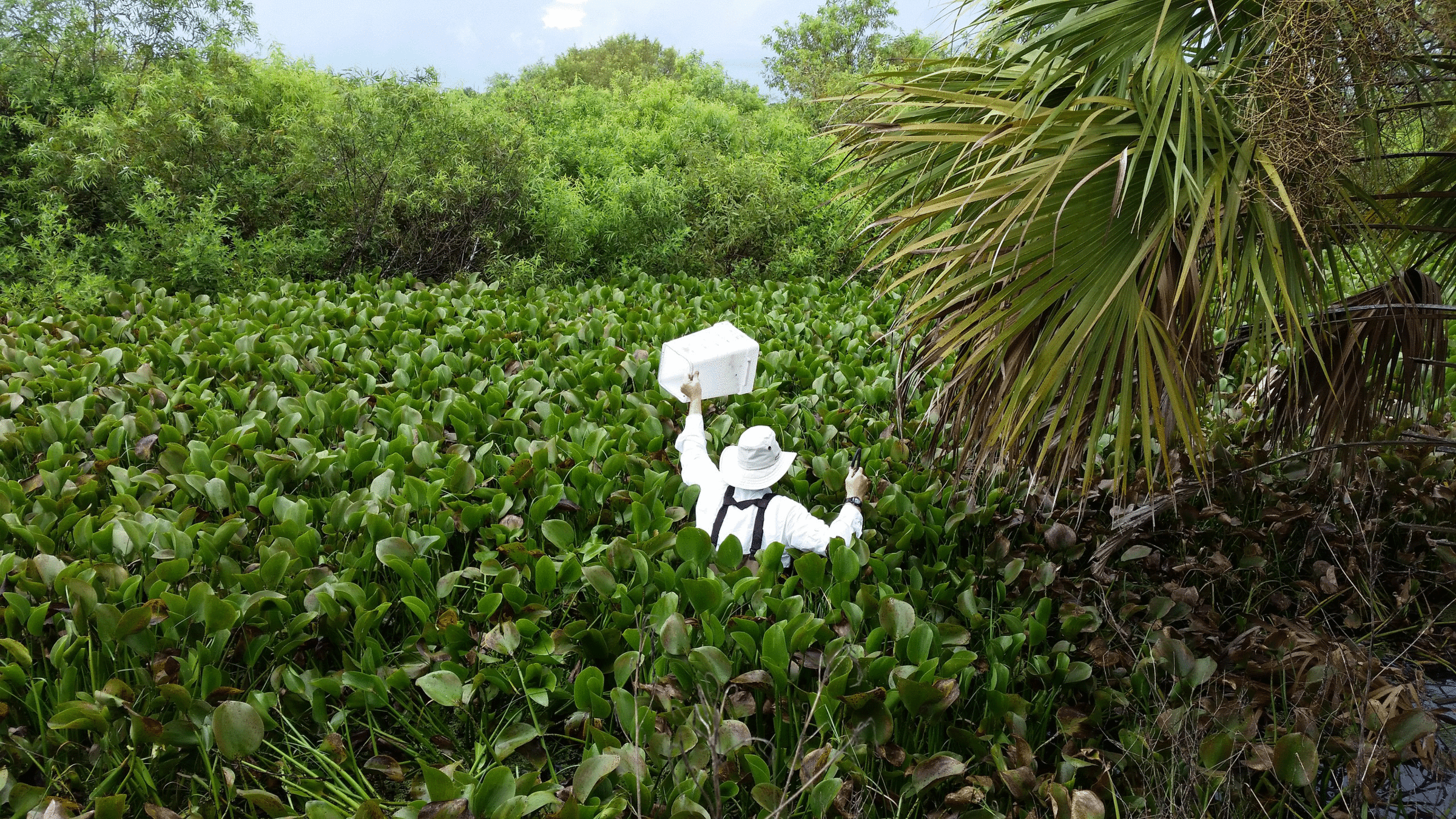Water hyacinth (Eichhornia crassipes), a flowering, aquatic plant native to South America, has been overtaking lakes, canals, and other freshwater bodies across the southern U.S. since it was first introduced as an ornamental in 1884.
With a lush landscape and subtropical climate, Southwest Florida is a very hospitable environment for many species of plants and animals that arrive here from other places. Some non-native varieties can become problematic when they outcompete native species for food and resources. Without predators, parasites, or weather conditions that keep them in check, non-native species may become “invasive,” and can have a real impact on the natural landscape. They can also impact human activities.
Water hyacinth grows in dense patches and displaces many native aquatic plants. Growing in dense mats that completely cover open water, water hyacinth can reduce habitat availability for wading birds and waterfowl, as well as clog waterways that are important for navigation and recreational fishing.
In addition to herbicide and manual removal, one of the management tools now available for water hyacinth is a biological control agent: a weevil called Megamelus scutellaris. According to the United States Department of Agriculture (USDA), biological control “is a management tactic that reunites exotic invasive plants with their natural enemies.” After at least a decade of controlled lab studies, scientists have identified a few pest insects that are specifically adapted to eating water hyacinth, and only water hyacinth.
In 2015 Corkscrew Swamp Sanctuary’s land management and research staff helped launch a project to learn more about water hyacinth control that has proven to be a model for collaborative efforts with research partners. For the past 5 years, scientists from the USDA Agriculture Research Services and the University of Florida have used Corkscrew Swamp Sanctuary as a field research site to study the combined effect of herbicide and biocontrol (Megamelus) to control water hyacinth. This research serves as a large-scale field trial for work the team has done in a greenhouse facility. By releasing and establishing a population of Megamelus at Corkscrew, USDA researchers and Corkscrew’s land management staff are hoping to determine if water hyacinth control can be achieved using significantly less herbicide. Our team is hopeful that this collaborative effort will augment the best management practices already being employed by natural area managers throughout the southeastern U.S.
Corkscrew’s visiting scientist program provides logistic support to scientists from state and federal agencies, colleges and universities, and other organizations wishing to conduct research that supports our conservation mission. While the project continues and conclusions are forthcoming, our team is hopeful that the addition of these pint-sized bugs to the Sanctuary’s toolbox will help managers save money and time while protecting wetland habitats from the deleterious effects of water hyacinth.
Please help us spread the word. When we save our water, it saves us back.





